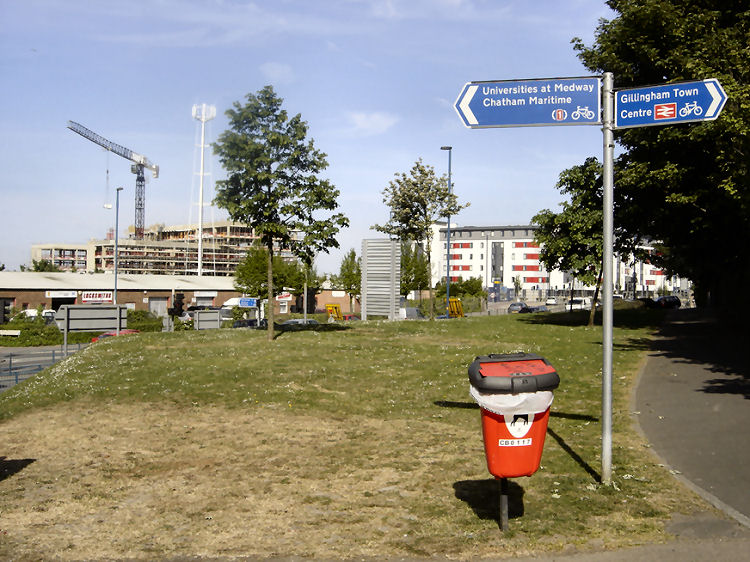|
Chatham News 29 October 1870.
THE BANKRUPTCY ACT, 1869.
In the County Court of Kent, holden at Rochester.
William Cane, of the "Admiralty Tavern," Gillingham, in the County of
Kent, licensed Victualler and Dealer in Shell Fish, was adjudged a
Bankrupt on the Twenty-Fourth day of October, 1870.
The first meeting of creditors will be held at the Courthouse, Eastgate,
Rochester, on the Tenth day of November, 1870, at Eleven o'clock in the
Forenoon.
Until the appointment of a Trustee, all Persons having in their
possession any of the Effects of the Bankrupt must deliver them, and all
Debts due to the Bankrupt must be paid to the Registrar. Creditors must
forward their proofs of Debts to the Registrar.
G. Brindley Acworth, Registrar.
|
|
Chatham News, Saturday 13 June 1891.
Sad death by drowning.
Yesterday, Mr. W. J. Harris, coroner, held an inquest at the "Admiralty
Tavern," Gillingham, as to the death of Charles Hodgson, age 24, an
Ordnance artificer, who was accidentally drowned on the previous day
under the distressing circumstances detailed in evidence below.
Mr. N. Cooper was Foreman of the jury.
Thomas Saunders, Master Gunner, in charge of Hoo and Darnet Fort, stated
that he left the fort in company with the deceased about 6 on Wednesday
afternoon to proceed to Hoo Fort in a flat bottom punt, about 16 foot
long and 3 1/2 foot wide, belonging to Mr. Cuckow, of Gillingham. They
picked the punt up, as they were left behind by the service-boat that
should have carried them across, and wishing to get to Hoo Fort in good
time, and thinking the punt perfectly safe, they pushed off from the
slip. The tide was running very strong at the time, which caused them to
ship a little water, and the deceased began to get frightened and jumped
overboard, intending to swim, but the act caused the boat to capsize,
and the witness also had to swim for his life. The deceased, who was a
good swimmer, was well ahead. Witness did not see him alive after that.
He was swimming with the tide, but could not say whether the deceased
was or not. The boat leaked a little, but was perfectly safe, and he did
not think it would have capsized if the deceased had kept still. They
were from 80 to 100 yards from the shore, and well within sight of the
men at the fort when the accident occurred. An effort was made by two
men at the fort to help them, but it was useless. It was entirely their
own voluntary act to take the boat, but they were in a hurry to get to
the fort. He did not see how far he (himself) swam, but was picked up
about 400 yards from the scene of the accident. The deceased body was
recovered by the boat crew, and brought to Gillingham, after being about
an hour in the water. They try to resuscitate him, but it was too late,
for life was already extinct.
The Foreman:- Had the boat been used after it was lost by its owner?
Witness:- No, not to my knowledge.
A juryman thought it seemed strange that only one boat was kept for the
two forts, and said that if the Hoo Fort had had a boat the deceased
would have been saved.
Edward Seagars, coxswain of the Royal Artillery boat, plying between the
two forts, was next called, and said his duty was the carry rations,
letters, and passengers to and fro. At about 6:20 p.m. yesterday
(Wednesday) he was proceeding to Darnet Fort to convey the last witness
to Hoo Fort, when he heard cries from the men at the fort to be quick,
as the master gunner was upset in a small punt. He then gave orders for
his men to do their best, and they picked Saunders up at about 500 yards
from the Upper Mussell buoy in Long Reach. He seemed pretty well
exhausted. Witness then turned around to come back, when he saw
something dark floating on the water, and on rowing to it he discovered
it was the deceased's head, so he took the body into the boat and
brought it to the pier, where they endeavoured to resuscitate life,
according to the instructions, but the effort was of no avail. The two
men would have had to wait more than an hour before witness could take
them, but rather than wait they trusted themselves to the punt, which
was a very old one.
James McGeorge, a gunner in the Royal Artillery, stationed at Hoo Fort,
corroborated the statements of the last witness in every detail.
Emma Kilkoran, a single woman, residing at No. 2, Green-Street,
Middle-Street, Old Brompton, gave evidence of identification. The
deceased was an ordnance artificer, 24 years of age.
The jury returned a verdict of "Accidentally drowned," but expressed an
opinion that there ought to be a boat kept in reserve for each fort in
case of accident, as one boat for the two forts was not sufficient.
|

